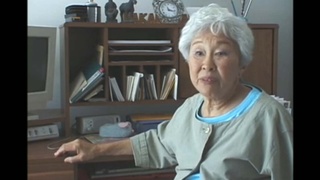Interviews
Facing housing discrimination in Rhode Island
So they gave me a list of people who would take on students for housing. So, I went knocking on all these doors they had on the list. This was in late August, before school started. As soon as I got there and tried to see if they had room...after about 5 or 6 of them, I began to realize, they all, for one reason or another, didn’t have any room. It was strange. So, I told my mother and father, “Something’s wrong here. I’m not going to go to this school.” So, I got on a Greyhound bus and came home. And I told ‘em, “I’m going to UCLA” because I was already accepted to UCLA. I had no idea what to do. So, basically, even in Rhode Island, I recall, even in New Jersey, when you went to a movie, African-Americans, or Black, were upstairs in the balcony and only whites were downstairs. Somehow, in New Jersey, I was treated as a white. So, anyway, it was a very strange kind of thing going on there. I told the Rhode Island School of Design “I’m not going there.”
Date: September 15, 2017
Location: California, US
Interviewer: Jennifer Cool
Contributed by: Jennifer Cool, Matthew Purifoy







